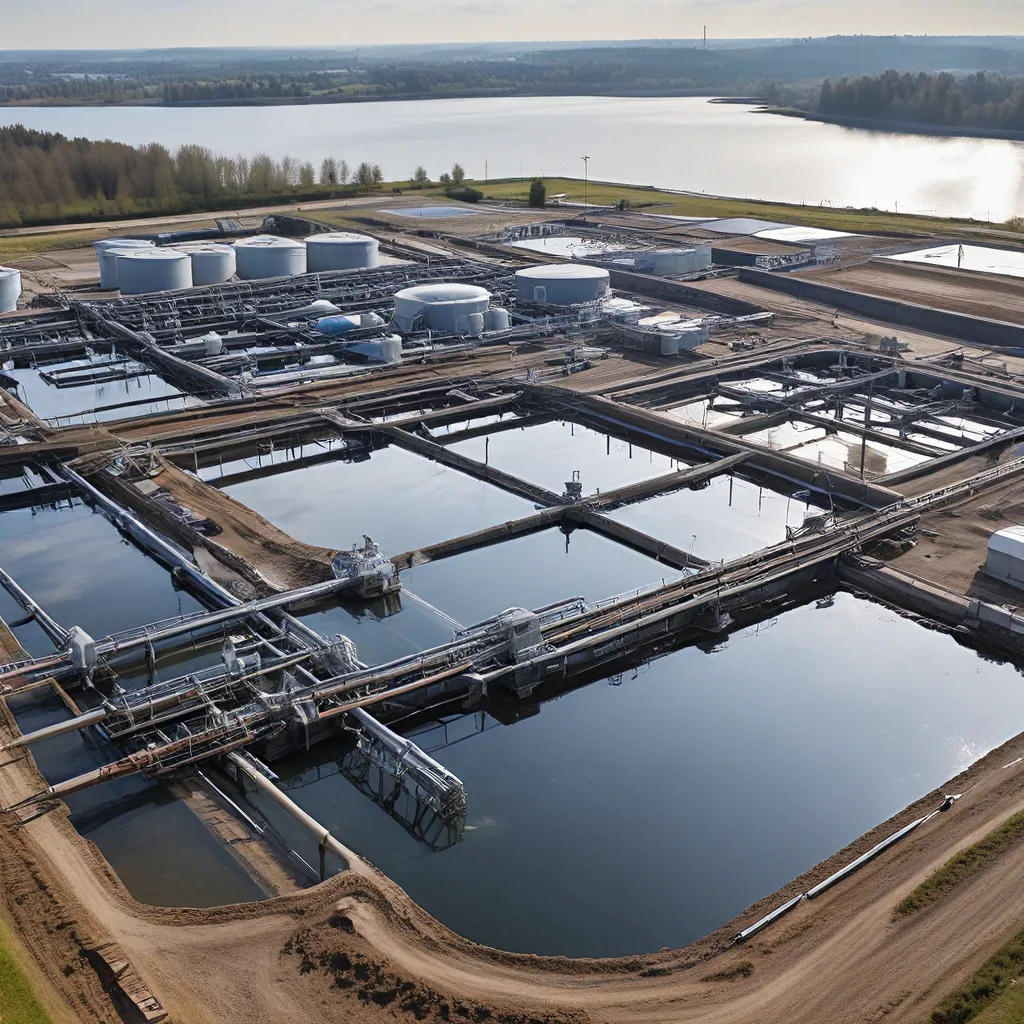
As I delve into the fascinating intersection of wastewater treatment and the hydrogen economy, I can’t help but feel a sense of excitement and optimism. It’s a realm where innovation and sustainability converge, offering us a glimpse into a future where our environmental challenges are met with ingenious solutions.
Let me start by painting a vivid picture for you. Imagine a world where the very waste we’ve long struggled to manage becomes a valuable resource, a catalyst for a clean energy revolution. This is the promise of the hydrogen economy – a future where hydrogen, the most abundant element in the universe, takes center stage as a clean, versatile, and renewable fuel source.
And here’s where wastewater treatment comes into play. Wastewater treatment facilities, often seen as necessary evils, have the potential to become hubs of energy production, transforming the way we think about waste management. By harnessing the power of wastewater, these facilities can unlock new pathways to generate hydrogen and other clean energy sources, ultimately contributing to a more sustainable and self-sufficient energy landscape.
The Untapped Potential of Wastewater
As I delve deeper into this topic, I’m struck by the sheer potential that lies within our wastewater systems. These facilities, often overlooked and underappreciated, are teeming with untapped resources that can be leveraged to power the hydrogen economy.
One of the key components is the anaerobic digestion process, which occurs naturally in wastewater treatment plants. This process involves the breakdown of organic matter by microorganisms in the absence of oxygen, resulting in the production of biogas – a mixture of methane and carbon dioxide. Traditionally, this biogas has been used to generate electricity or heat, but now, the focus is shifting towards extracting the hydrogen from this valuable resource.
Harnessing Biogas for Hydrogen Production
The hydrogen economy is gaining traction, and wastewater treatment facilities are poised to play a crucial role in its development. By implementing innovative technologies and processes, these facilities can extract the hydrogen from the biogas produced during anaerobic digestion, transforming it into a clean, renewable fuel source.
One of the promising avenues is the use of water electrolysis, a process that uses electricity to split water molecules into hydrogen and oxygen. Wastewater treatment plants can harness the biogas to generate the necessary electricity for this process, effectively creating a closed-loop system where waste is transformed into a valuable energy source.
Moreover, the hydrogen produced can be stored, transported, and used in a variety of applications, including powering fuel cell vehicles, generating electricity in hydrogen-powered generators, or even being integrated into the broader energy grid. This symbiotic relationship between wastewater treatment and the hydrogen economy holds immense potential for a more sustainable future.
Collaboration and Innovation Driving Progress
As I delve deeper into this topic, I’m inspired by the collaborative efforts and innovative approaches that are driving progress in the intersection of wastewater treatment and the hydrogen economy.
The Biden-Harris Administration, through initiatives like the Bipartisan Infrastructure Law, has made significant investments in rebuilding America’s infrastructure and supporting the development of clean energy technologies. The White House has highlighted the importance of this collaboration, announcing the regional clean hydrogen hubs that will drive clean manufacturing and jobs across the country.
Companies like Jacobs, a global leader in professional services, are also at the forefront of this movement. They are leveraging their expertise in wastewater treatment, consulting, and project delivery to help communities and industries unlock the potential of hydrogen production from wastewater.
Navigating the Challenges and Opportunities
As with any transformative change, the journey towards integrating wastewater treatment and the hydrogen economy is not without its challenges. However, I’m encouraged by the innovative solutions and forward-thinking approaches that are emerging to overcome these obstacles.
One of the key challenges lies in the technical and economic feasibility of the processes involved. Extracting hydrogen from biogas, optimizing water electrolysis, and developing efficient storage and distribution systems require significant investments and technological advancements. But as I’ve witnessed, the Biden-Harris Administration and industry leaders are committed to addressing these challenges head-on, making strategic investments and fostering collaborative research and development efforts.
Another crucial aspect is the policy and regulatory landscape. Ensuring that the appropriate frameworks and incentives are in place to support the growth of the hydrogen economy and the integration of wastewater treatment facilities is essential. Policymakers and industry experts are working together to navigate this complex terrain, shaping the policies and regulations that will enable the widespread adoption of these innovative solutions.
The Bright Future Ahead
As I contemplate the future of wastewater treatment and the hydrogen economy, I can’t help but feel a sense of boundless optimism. The potential is truly staggering, and the progress being made is a testament to the ingenuity and determination of those at the forefront of this revolution.
Imagine a world where our wastewater treatment facilities are transformed into energy-producing hubs, where the very waste we’ve struggled to manage becomes a valuable resource for powering our communities. A world where hydrogen, the clean and renewable fuel of the future, is seamlessly integrated into our energy infrastructure, reducing our reliance on fossil fuels and paving the way for a more sustainable and self-sufficient energy landscape.
This vision is no longer a distant dream; it’s a reality that is rapidly taking shape, thanks to the collaborative efforts of policymakers, industry leaders, and innovative thinkers. As we continue to explore the intersections of wastewater treatment and the hydrogen economy, I’m confident that we’ll uncover even more opportunities to transform our environmental challenges into sustainable solutions.
So, let’s dive in and explore this fascinating frontier together. Who knows what remarkable discoveries and breakthroughs await us? The future is ours to shape, and it’s time to embrace the untapped potential that lies within our wastewater systems and the hydrogen economy.